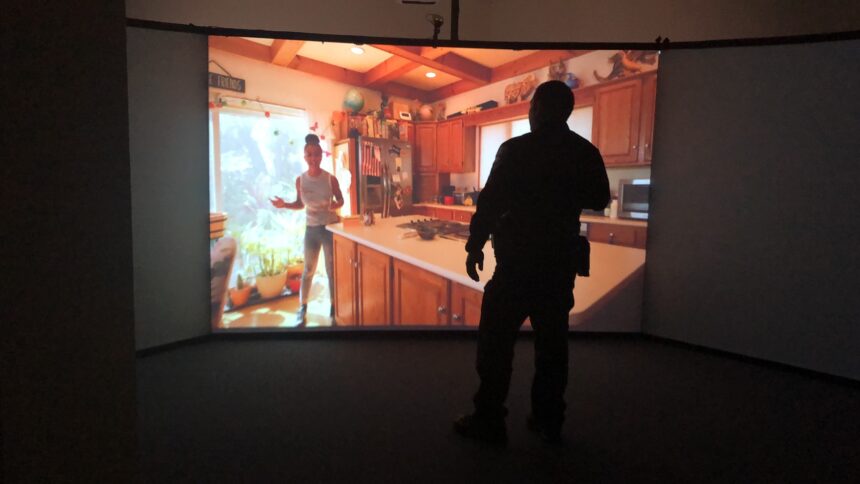Amid nationwide debate over police tactics, Oxnard officers are training in de-escalation


OXNARD, Calif. -- Oxnard police officers are training in de-escalation with the help of a video simulator that replicates real life situations.
The simulator is how the Oxnard Police Department is training for 911 calls and honing the necessary skills to de-escalate what could become a dangerous situation.
We were given an inside look at what many officers go through when responding to 911 calls and the decisions they make in a matter of seconds.
"It is pretty realistic,” said Martin Cook, with the Oxnard police special enforcement unit. “We see officers really engage with the screen."
The 'MILO' simulator program is a training video system that interacts with officers to provide them with training on how to handle different scenarios. The goal is to help them de-escalate the situation and prevent use of force. The department has been using the video training technology for nearly 3 years.
"It definitely helps them stay calm in a stressful situation,” said Cook. “When you have been through something numerous times in the simulator and in our live active training, it kind of inoculates you to that stress, and helps you remain calm. It helps you communicate better."
Officers train on the video simulator twice a year and also go through live training with actors.
The simulator works like this: Officers are given a scenario and depending on their reaction, the instructor can change the outcome.
The setting we watched playout: a disturbance at the mall.
“Station 3F10, we have a subject that is in possession of a possible knife and is not being compliant,” said Senior Office Jose Velasquez, who was going through the training.
During training, Velasquez tries to reason with the person several times, but then the person charges at the officer.
Afterwards instructors talk to the officer about what happened.
The training then shifted to a more intense scenario — an active shooter.
"Hey drop the gun,” Velasquez says during training. “Drop the gun. Partner get out of the way. Drop the gun.” Shots are then heard.
“It's normal for your heart to race,” said Velasquez.” The more times you do it this you build reputation and its muscle memory, and control your breathing."
It comes amid nationwide debate over police tactics and calls for more oversight in the wake of several high-profile police shootings.
Just last year, officer Timothy Roberts was in an officer involved shooting in Oxnard. Police said a woman refused to drop a knife.
Investigators said she charged Roberts with the weapon as he fired his gun three times. Roberts had gone through this scenario on the the simulator just weeks prior.
"He wasn't just an officer that went through it. He was actually one of the instructors,” said Cook. “Him putting on that training and putting officers through it, and having an almost identical situation happen to him out on the field — it is very ironic. It just shows you that this type of training is real to life whether you think it’s just a simulator or not."
